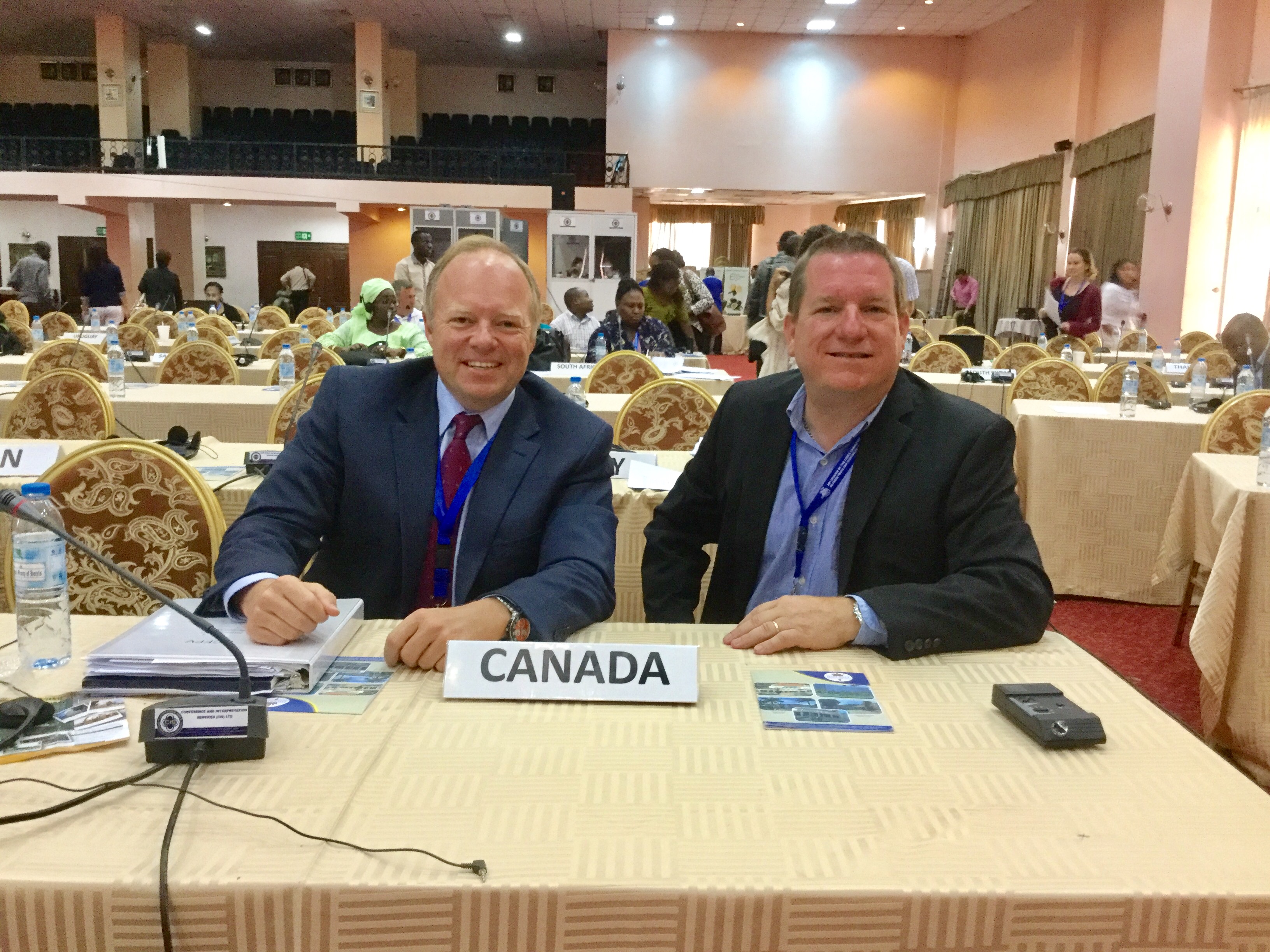DRC had the pleasure of chatting with Jim Gordon from Ippolito Produce Ltd. located at the Ontario Food Terminal to get a Canadian perspective on federal inspections.
Mr. Gordon has been in the industry for about 45 years, spending approximately half that time in a wholesale environment in operations management at the food terminal. The other half was spent working for retail chains in merchandising and marketing of produce. Mr. Gordon is currently with Ippolito Produce Ltd. at the Ontario Food Terminal a food terminal wholesaler and is the Manager of Operations responsible for selling and everything that happens on the floor, how customers are treated, product coming into and out of the terminal and all the administration with the employees.
Mr. Gordon began with an overview of past issues that led to today’s landscape. He noted that it is important to understand that prior to the Destination Inspection Service (DIS) coming into being, the inspection service provided by CFIA was deemed lacking from an industry perspective.
“The preface is that destination inspections are there to facilitate trade and assist in dispute management between shippers and receivers across international boundaries. Having a credible and valid inspection service was critical for the industry to continue with international trade, specifically across the Canada/U.S. border. The state of the inspection service at that time was not assisting either shippers or receivers in dealing with their disputes and then settling their disagreements,” noted Mr. Gordon.
Industry came together to explore alternative options for providing a timely and credible inspection service that would facilitate this kind of activity. Industry representatives from Canada, the U.S., Mexico and more were involved. One message that was loud and clear was the desire for the involvement of the Canadian Government under the purview of the Canadian Food Inspection Agency (CFIA). Many models were explored at the time with industry and government landing on developing a business-like service model providing timely and credible inspection service to facilitate dispute resolution for international trade. The Destination Inspection Service (DIS) was born. “Here we are all these years later and it’s working quite well,” stated Mr. Gordon. “We’re hearing that from both sides of the industry and from both sides of the border and that’s a good thing,” he continued.
“When industry started talking with CFIA and building the model it needed to be a cost recovery model. The industry needed to pay the expense to run the model within the Agency,” he noted. As rates went up to assure cost recovery, Mr. Gordon noted that they did see numbers of inspections going down which was financially detrimental to the new model.
“CFIA has been very good in continuing to fund the DIS model and keep it going. As we started to analyze where the inspections were being driven to, we found that the higher costs caused industry to look at other alternatives,” continued Mr. Gordon. A number of inspections were driven to private services. In longer term relationships where there was an element of trust involved, companies were relying on in-house inspections. Many of the inspectors on the Canadian side of the border were being trained by the Ontario Produce Marketing Association (OPMA) in proper inspection of goods, proper documentation of the inspection and how to determine the numbers and terms that are generally used in the industry so that all would understand what reports were stating.
“A number of trading relationships thought the increased expense was too great in many cases and they started accepting in-house inspections,” stated Mr. Gordon. “I think over the course of time it actually improved many trading relationships. It had an affect we didn’t expect to see,” he continued. Mr. Gordon stated that this change continues to be felt today as numbers of inspections done by DIS today are down from numbers in the first few years of their existence.
When a contract is agreed to between two parties, condition of goods is part of that contract. If there is no specific grade spoken to in the contract of sale, the expectation is, on arrival at the destination site, the goods will meet good delivery standards. In the receiver’s mind if those goods fail to meet good delivery, there’s a dispute mechanism that goes into place in determining if they fail and, if so, to what degree the goods fail delivery standards. A third party inspection is a critical element in making that determination.
“An unbiased third party is important. If an inspector is working for the shipper or for the receiver they are going to lean one way or the other,” stated Mr. Gordon. “In the case of DIS they are totally non-biased and do not work for either party. They are purely looking at the goods and whether or not they meet the delivery standard,” he continued. This results in a determination as to whether or not the receiver is paying in full or whether there is some sort of arrangement made between the two parties.
Mr. Gordon believes that government provided inspectors have a level of training and additional support such as online databases, online support, and access to other resources, be it printed or human resources that would be hard to match by private inspection service providers. “Private inspectors likely don’t have the same level of resources available to them,” said Mr. Gordon. Impartiality, not working for one side or the other, is another advantage to federal inspections as well as appeal mechanism that are in place with federal inspections.
“On the terminal, the use of federal inspections by larger wholesalers is usually on those transactions when they don’t have long term relationships,” he continued. “The shipper seeing the product in good condition with their own eyes while loading the truck is likely going to want some evidence if there are claimed issues at arrival,” concluded Mr. Gordon.




